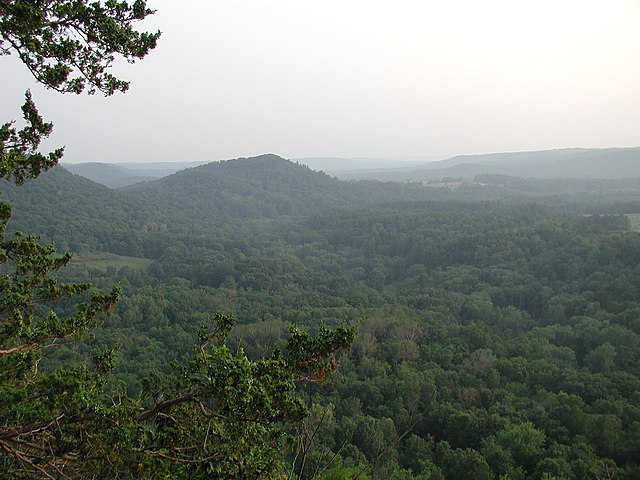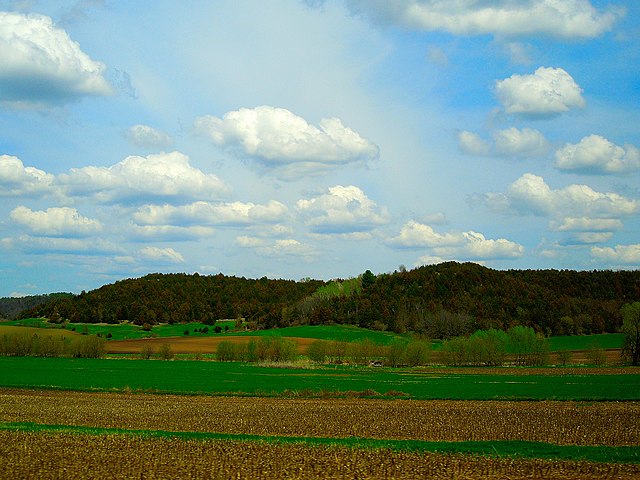Algific talus slopes comprise a very rare, fragile ecosystem and habitat initially believed to exist only in the Driftless Area of Minnesota, Wisconsin, Illinois, and especially, Iowa. More recently, other algific talus slopes have been identified in the Allegheny Mountains of West Virginia. It has been suggested that close comparison with similar sites worldwide may enlarge the distribution, or that the term may become restricted to the flora and fauna characteristic of these zones within the Driftless Area.
Algific talus slopes along Howard Creek at Driftless Area National Wildlife Refuge, May 2018
The Driftless Area, also known as Bluff Country and the Paleozoic Plateau, is a topographical and cultural region in the Midwestern United States that comprises southwestern Wisconsin, southeastern Minnesota, northeastern Iowa, and the extreme northwestern corner of Illinois. The Driftless Area is a USDA Level III Ecoregion: Ecoregion 52. The Driftless Area takes up a large portion of the Upper Midwest forest–savanna transition. The Blufflands refers to the eastern section of the Driftless area in Minnesota, due to the steep bluffs and cliffs around the river valleys. The western half is known as the Rochester Plateau, which is flatter than the Blufflands. The Coulee Region refers to the southwestern part of the Driftless Area in Wisconsin. It is named for its numerous ravines.
Autumn in the Driftless Area of Cross Plains, Wisconsin
Typical terrain of The Driftless Area as viewed from Wildcat Mountain State Park in Vernon County, Wisconsin
Typical Driftless Area Scenery near Mazomanie, Wisconsin
Tablet Rock Overlook in Wisconsin's Devils Lake State Park, located in the Baraboo Range





